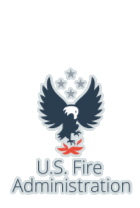|
Keeping houses of worship facilities secure while sustaining the open and welcoming environment necessary for peaceful congregation requires a holistic approach to security.
All houses of worship support personnel can contribute greatly to enhancing security by understanding how to identify behavioral indicators of potential criminal activity and by taking precautionary actions to safely mitigate the impacts of a potential attack. With several high-profile religious holidays in the fall and winter fast approaching, now is an excellent time for local law enforcement to strengthen ties with houses of worship in their communities and foster awareness around how to recognize and lawfully report suspicious activity.
This article highlights several organizations offering free resources and support for local law enforcement to help them facilitate outreach to faith-based community groups and build awareness about how they can help thwart potential attacks and better secure their facilities.
National Faith and Blue Weekend will be observed this year from October 8-11. This initiative is organized jointly by the Department of Justice Office of Community Oriented Policing Services (COPS Office) and MovementForward, Inc.'s One Congregation One Precinct (OneCOP) initiative. Faith and Blue Weekend aims to re-calibrate police-community relations through solutions-focused activities that are organized jointly by faith-based or other community groups and law enforcement agencies. The initiative’s website offers a toolkit, which includes a script to help law enforcement connect with a local house of worship and indicate interest in jointly organizing an activity with them. It also includes tools to help with jointly planning and promoting a community event.
The Cybersecurity and Infrastructure Security Agency (CISA) has developed a 6-page guide called The Power of Hello for Houses of Worship. This is an excellent resource to educate members of houses of worship on how to identify behavioral indicators of potential criminal activity and take precautionary actions to safely mitigate the impacts of a potential attack. This resource explains how to use a simple, four-step “OHNO approach” – Observe, Initiate a Hello, Navigate the Risk, and Obtain Help. It also offers guidance targeted to houses of worship for more extensive emergency response planning. The Power of Hello for Houses of Worship is available in English and Spanish. A briefer version of The Power of Hello which simply outlines the OHNO approach is available in multiple formats, including translations in 13 different languages.
The Department of Homeland Security (DHS) has just concluded its If You See Something, Say Something® Awareness Day, also known as #SeeSayDay, which takes place every year on September 25. This annual awareness day is used to promote DHS’ year-round If You See Something, Say Something® campaign, a national campaign to raise public awareness of the indicators of terrorism and terrorism-related crime, as well as the importance of reporting suspicious activity to state and local law enforcement. If You See Something, Say Something® campaign materials have been translated into 12 languages to date.
All of these resources can be used by law enforcement at any time of the year to initiate partnerships, share information with houses of worship personnel, and guide discussions on how to better secure their facilities and congregations.
(Sources: Various)
The Assistance to Firefighters Grant (AFG) represents one of the largest single sources of financial assistance for fire departments. Traditionally, the AFG application period opens sometime in the fall and closes a month later. Because of the narrow window of opportunity to apply for AFG funding, fire departments need to get as much work done as possible in advance before the grant period opens. This means first clearly determining your department’s funding priorities and then compiling the information that is likely going to be required for the grant application.
A recent article from Volunteer Firefighter International outlines essential information fire departments need to know to prepare a winning grant application ahead of the deadline. Key takeaways from the article include:
- Applicants need to understand and follow the requirements laid out in the Notice of Funding Opportunity (NOFO) when it becomes available. Although funding priorities vary from year to year, it can be helpful to review the NOFOs from previous years. Past NOFOs and additional guidance for applicants are available for viewing on this page of FEMA’s website. When the FY2021 NOFO is released, it will also appear here.
- Having concise and accurate numbers for a department’s statistics is key to a successful application. Departments can start now by organizing and consolidating data on their department and area of responsibility. This may include data on runs, types of calls and response capabilities, demographic and economic data about the response area, and descriptions of high threats impacting the response area. Data collection can be delegated among staff by assigning responsible parties and due dates.
- For narrative portions of the grant application, it is important to focus more on outcomes than on needs, to show how the requested items will directly benefit not just the firefighters, but also the entire community they serve. These sections require concise, focused writing and effective editing. Departments can start preparing ahead by making decisions now on who is available to do this type of writing and editing, and by selecting a set of reviewers of the draft application.
The full article from Volunteer Firefighter International offers additional information on how AFG applications are scored and many more tips for successful applications.
(Source: Volunteer Firefighter International)
The Cybersecurity and Infrastructure Security Agency (CISA) will host its fourth annual National Cybersecurity Summit this October. Coinciding with Cybersecurity Awareness Month, the 2021 summit will be held virtually as a series of webinars each Wednesday in October, beginning Oct.6 and ending Oct. 27. The virtual Cyber Summit will be hosted on Microsoft Teams Live and can be viewed at cisa.gov/live. Registration is required but there is no cost to attend.
Last year’s event, also hosted virtually, had more than 15,000 attendees from around the world. The 2020 Cyber Summit educated external participants on the threats, roles, and actionable steps to take toward maintaining cybersecurity. CISA has made the proceedings from last year available on its website.
This year’s virtual event will bring critical infrastructure stakeholders together in a forum for meaningful conversations and collaboration on cybersecurity, with presentations focused on vulnerability management, partnerships, cyber workforce development, and the convergence of security domains and cyber-physical risk management efforts.
Each week will feature presentations and sessions on a different theme. This year’s themes are:
-
Oct. 6: Assembly Required: The Pieces of the Vulnerability Management Ecosystem.
-
Oct. 13: Collaborating for the Collective Defense.
-
Oct. 20: Team Awesome: The Cyber Workforce.
-
Oct. 27: The Cyber/Physical Convergence.
Registration for this year’s Cybersecurity Summit is now open. Additional information will be provided in the coming weeks at CISA.gov/cybersummit2021.
(Source: CISA)
|





